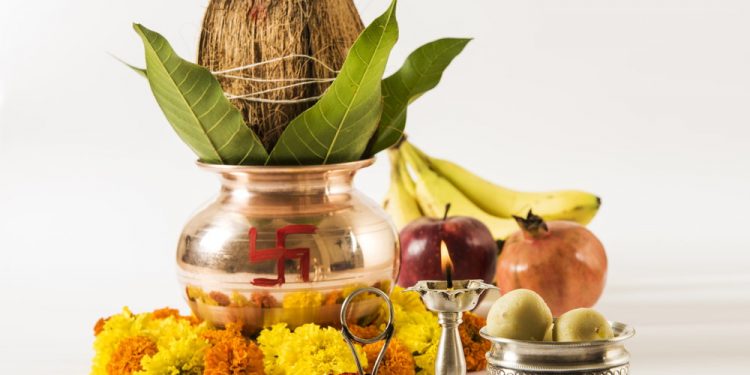Coconut is omnipresent in Indian culture irrespective of the religion. It is often called as Shrifal in Hindu scriptures and revered as Kalpawriksha as every part of it can be used for some purpose. Any pooja in hinduism is incomplete without coconut in it.
Take a look into the various reasons why coconuts are considered so holy?
- Lifespan of a coconut tree is on average 70 years but in general 120 years. As per astrology, life span of a human is 120 years that is why Vimsodhari dasa ie Mahadasa of all 9 planets will take 120 years to get complete. Thus coconut tree gets equivalent to that of a human.
- In Tamil nadu, coconut tree is called as thennam pillai meaning coconut child and they never call it as a tree but only as child. Even cutting of a live coconut tree is considered a sin and equivalent to that of murdering their own child in Tamil culture.
- A coconut tree may consume any type of water from sweet ground water to salty sea water but the fruit which it bears always gives only sweet water. This is equivalent to that of life of an ascetic or a mother because only they give good things to their followers and children. For this reason, pregnant ladies are not allowed to break open a coconut as it is equivalent to kill a life form and moreover the vibrations from breaking a coconut could harm the fetus in the womb.
- A coconut resembles the head of a human – Hard shell is covered by unwanted hair like coir, eyes are covered by a hard and sharp coir imitating our pride, hard shell denotes the egoistic selfishness, sweet water denotes the humane nature and the white sweet layer denotes the pure soul. One breaks open the coconut during pooja to indicate that ego, selfishness and pride to expose the soul to the God.
- Coconut has three eyes and is symbolically represents Lord Shiva. This is the reason why in any rituals coconut is made a witness to indicate that it happens in the presence of Shiva. Coconut has neither a beginning nor an end and it indicates the Shiva form.
- According to a legend, Vishwamitra was moved on seeing the animal sacrifice or human sacrifice in Hindu rituals. In order to end such life sacrifices, Vishwamitra introduced breaking open a coconut which resembles a life form. From then coconut breaking is included in all Hindu rituals.
- Coconut is called “Shri-Phal” in many scriptures. Along with coconut the bananas are also called Shri-phal. “Shri” means Laxmi/Goddess of Wealth. So Shri-Phal means the fruit of Laxmi.
PNN






































